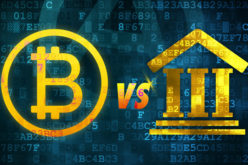Cryptocurrency comparison

Bitcoin is actually a cryptocurrency that can be used as regular money. People can buy goods, clothes and pay for holidays using bitcoin.
In comparison to a bank or payment gateway the cryptocurrency system enables payments to be sent between users without passing through a central authority. As it’s created and held electronically. Bitcoins aren’t printed, like rands, dollars or euros they’re produced by computers all around the world, using free software.
Bitcoin was the first example of what we today call cryptocurrencies. A growing asset class that shares some characteristics of traditional currencies, with verification based on cryptography.
It’s different from traditional currencies. Bitcoin can be used to pay for things electronically, if both parties are willing. In that sense, it’s like conventional rands, dollars, euros, or yen, which are also traded digitally.
But it differs from fiat digital currencies in several important ways:
Decentralisation
Bitcoin’s most important characteristic is that it’s decentralised. No single institution controls the bitcoin network. It’s maintained by a group of volunteer coders, and run by an open network of dedicated computers spread around the world. This attracts individuals and groups that are uncomfortable with the control that banks or government institutions have over their money.
Bitcoin solves the “double spending problem” of electronic currencies. In which digital assets can easily be copied and re-used through an ingenious combination of cryptography and economic incentives. In electronic fiat currencies, this function is fulfilled by banks, which gives them control over the traditional system. With bitcoin, the integrity of the transactions is maintained by a distributed and open network, owned by no-one.
Limited supply
Fiat currencies like rands, dollars, euros, yen and so forth have an unlimited supply. And central banks can issue as many as they want, and can attempt to manipulate a currency’s value relative to others.
With bitcoin, on the other hand, the supply is tightly controlled by the underlying algorithm. A small number of new bitcoins trickle out every hour, and will continue to do so at a diminishing rate until a maximum of 21 million has been reached. This makes bitcoin more attractive as an asset in theory, if demand grows and the supply remains the same, the value will increase.
Immutability
Bitcoin transactions cannot be reversed, unlike electronic fiat transactions. While this may disquiet some, it does mean that any transaction on the bitcoin network cannot be tampered with










